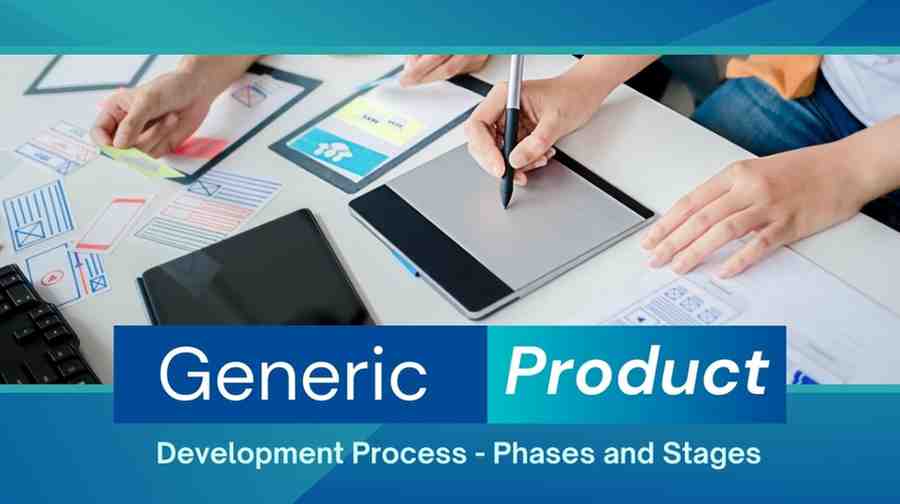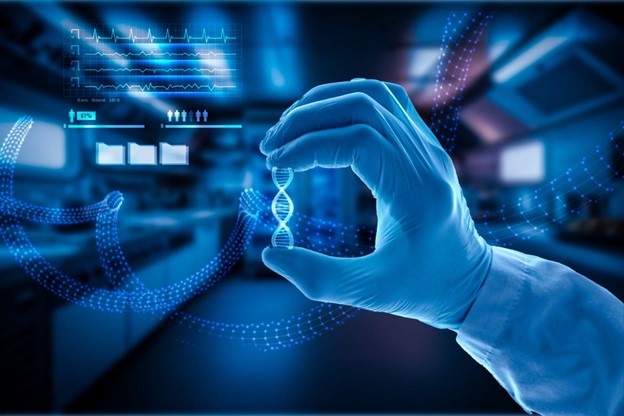Last updated on May 20th, 2025 at 11:59 am

In medicine, the generic product development process follows a meticulous journey from ideation to market introduction. The initial stages involve identifying healthcare needs and conducting feasibility analyses to ensure both efficacy and cost-effectiveness. Collaborative efforts between medical experts, researchers, and pharmaceutical developers lead to the design and prototyping of medications.
Rigorous testing for safety and effectiveness ensues, followed by regulatory compliance procedures. Marketing strategies tailored to the medical community and patients are devised, and post-launch support includes ongoing monitoring and potential adjustments based on patient outcomes and feedback. The process is a comprehensive endeavour, aiming to deliver accessible and high-quality pharmaceutical solutions to address healthcare challenges.
Generic Product Development Process
In the dynamic world of medicine, the development of generic drugs plays a crucial role in providing affordable and accessible healthcare solutions. The generic product development process is a complex journey that involves various stages, from conceptualization to market release.
1. Conceptualization and Research
The journey begins with identifying the need for a generic drug. Researchers delve into the existing medications, analyzing their efficacy, safety, and market demand. This phase involves an in-depth study of the molecular structure of the original drug, identifying its active ingredients, and understanding its therapeutic effects. The goal is to create a generic version that mirrors the original drug’s performance.

2. Regulatory Compliance
One of the critical aspects of generic product development in medicine is adhering to stringent regulatory guidelines. Developers must navigate through the regulatory landscape, ensuring that the generic drug meets the required standards for safety, efficacy, and quality. This phase involves extensive documentation, submission of data to regulatory bodies, and obtaining approval before proceeding to the next stages.
3. Formulation and Development
Once regulatory approval is secured, the formulation and development phase begins. Scientists work on developing a formulation that replicates the active ingredients and performance of the original drug. This stage involves rigorous testing, optimization, and fine-tuning of the formula to ensure consistency and efficacy.
4. Clinical Trials
Clinical trials are a pivotal stage in the generic product development process. Rigorous testing is conducted to evaluate the generic drug’s safety and effectiveness compared to the original medication. These trials involve different phases, including testing on healthy volunteers and later on individuals with the target medical condition. The data collected during clinical trials is crucial for obtaining final regulatory approvals.
5. Manufacturing and Quality Control
Once the generic drug successfully passes clinical trials, it moves into the manufacturing phase. Pharmaceutical companies scale up production, adhering to Good Manufacturing Practices (GMP). Stringent quality control measures are implemented to ensure that each batch of the generic drug meets the required standards of purity, potency, and consistency.

6. Market Approval and Launch
After successfully navigating through regulatory approvals, the generic drug is ready for market release. Marketing strategies are developed, and the drug is introduced to healthcare professionals and consumers. The generic drug’s affordability becomes a key selling point, making it an attractive alternative to the original medication.
7. Post-Market Surveillance
The journey doesn’t end with the market launch. Post-market surveillance is a continuous process where the generic drug’s performance is monitored. This phase involves tracking adverse effects, conducting further research, and making necessary adjustments to ensure ongoing safety and efficacy.
> Consult a Doctor and Medkart will help you Order Medicines Online
Challenges of Phases of Generic Product Development Process
- Communication and Collaboration: Effective communication and collaboration between cross-functional teams are critical at every stage.
- Market Research: Continuous market research is necessary to stay attuned to changing customer needs and market dynamics.
- Risk Management: Proactively identifying and managing risks ensures that unforeseen challenges are addressed promptly.
- Agility: Adopting agile methodologies allows for flexibility and responsiveness to evolving requirements and market conditions.
Also, Read:
- How to Identify Generic Medicine?
- Are Generic Medicines as Safe as Brand Name Drugs?
- Why do generic and brand-name drugs look different?
- Are Expired Drugs Still Safe to Take?
Conclusion
The generic product development process in medicine is a meticulous and multifaceted journey, requiring collaboration between researchers, regulatory bodies, and pharmaceutical companies.
From conceptualization to post-market surveillance, each stage plays a vital role in bringing affordable and accessible healthcare solutions to individuals worldwide. As the pharmaceutical landscape continues to evolve, the development of generic drugs remains a cornerstone in the pursuit of better and more accessible healthcare for all.
Read: What are Generic Medicines?
FAQs on the Generic Product Development Process
Q1. What is the generic product development process?
The generic product development process in medicine involves creating and manufacturing pharmaceuticals that are equivalent to brand-name drugs, typically after the expiration of patent protection. This includes comprehensive research, formulation, clinical trials, and regulatory approval to ensure safety and efficacy. Generic drugs provide cost-effective alternatives, maintaining the same active ingredients as their branded counterparts.
Q2. What role does regulatory compliance play in the product development process, especially in the context of medicine?
Regulatory compliance is paramount in medicine development. It ensures adherence to safety and efficacy standards set by health authorities, safeguarding patient well-being and facilitating market approval.
Q3. How does the iterative process of prototyping contribute to the development of medical products?
Prototyping in medicine allows for testing and refining product designs, helping to identify and rectify potential flaws early in the development cycle. This iterative approach ensures the final product meets stringent quality and safety standards.
Q4. How does post-launch support differ in the context of pharmaceuticals and medical devices?
Post-launch support for pharmaceuticals focuses on monitoring and addressing any adverse effects or unexpected outcomes. For medical devices, it includes ongoing maintenance, updates, and adherence to evolving regulatory requirements to ensure continued safety and effectiveness.
Related Links:
-
- Best Acupuncture Treatment
- Yeast Infection Treatment
- Varicocele Treatment
- Uterine Fibroids Treatment
- Tinnitus Treatment
- Best Stye Treatment
- Stomach Ulcer Treatment
- Latest Schizophrenia Treatment
- Plantar Fasciitis Treatment
- Best Pimple Treatment
- Normal Heart Rate by Age
- Maximum Delay in Periods if not Pregnant